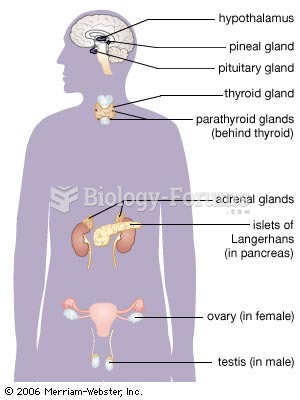|
|
|
Approximately one in four people diagnosed with diabetes will develop foot problems. Of these, about one-third will require lower extremity amputation.
Amphetamine poisoning can cause intravascular coagulation, circulatory collapse, rhabdomyolysis, ischemic colitis, acute psychosis, hyperthermia, respiratory distress syndrome, and pericarditis.
Many of the drugs used by neuroscientists are derived from toxic plants and venomous animals (such as snakes, spiders, snails, and puffer fish).
The top five reasons that children stay home from school are as follows: colds, stomach flu (gastroenteritis), ear infection (otitis media), pink eye (conjunctivitis), and sore throat.
Astigmatism is the most common vision problem. It may accompany nearsightedness or farsightedness. It is usually caused by an irregularly shaped cornea, but sometimes it is the result of an irregularly shaped lens. Either type can be corrected by eyeglasses, contact lenses, or refractive surgery.
 The respiratory system: nasal cavity, pharynx, larynx, trachea, bronchus, and lung with expanded vie
The respiratory system: nasal cavity, pharynx, larynx, trachea, bronchus, and lung with expanded vie
 The Hepatic Portal Blood Supply The liver receives water, minerals, and nutrients from the digestive
The Hepatic Portal Blood Supply The liver receives water, minerals, and nutrients from the digestive





